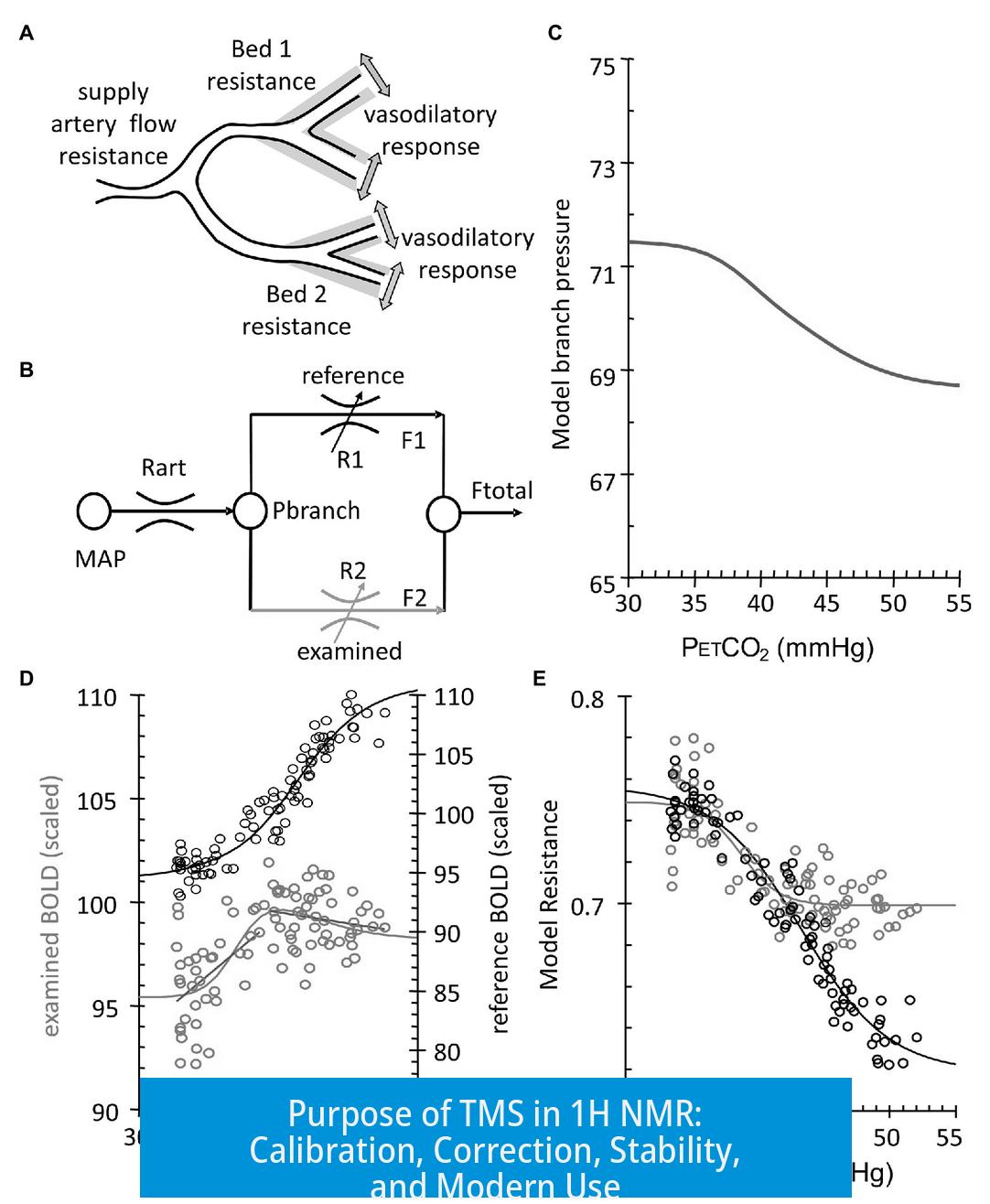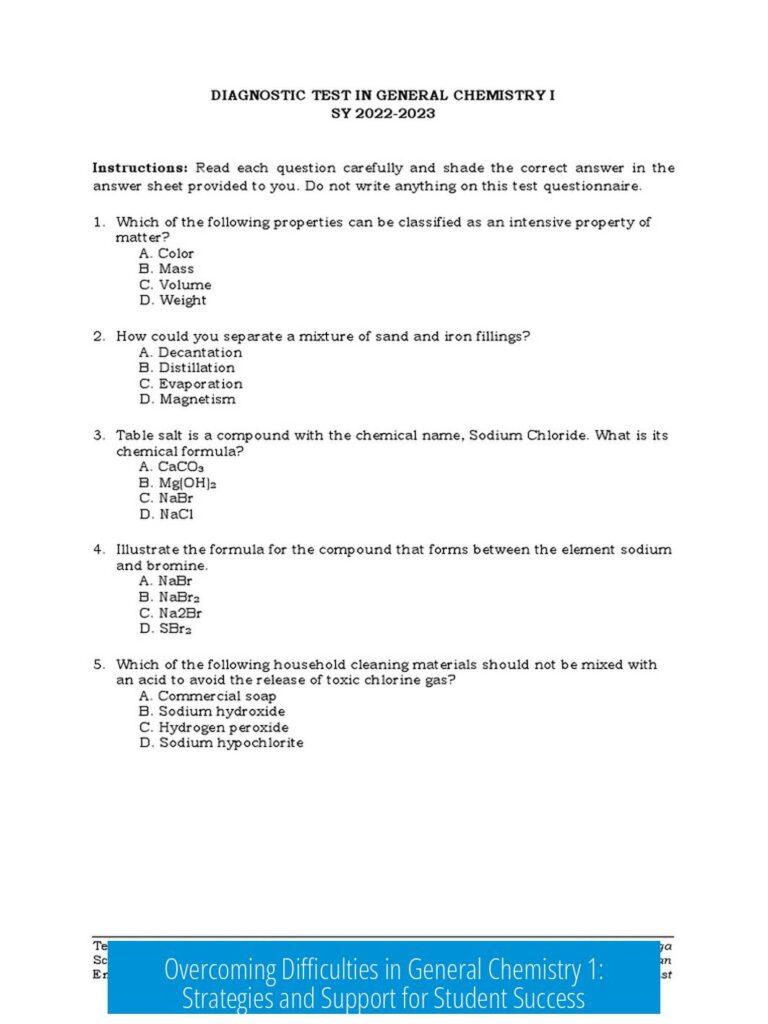Purpose of TMS in 1H NMR Spectroscopy
Tetramethylsilane (TMS) serves primarily as a calibration standard in 1H Nuclear Magnetic Resonance (NMR) spectroscopy by providing a fixed reference peak at 0 ppm. This reference enables accurate measurement and comparison of chemical shifts across different spectra and instruments.
Calibration Standard with a Fixed Chemical Shift
In 1H NMR, chemical shifts are measured relative to a standard reference signal. TMS is chosen because its proton resonance produces a sharp, intense peak designated as 0 ppm. This peak acts as the zero point against which all other proton signals in the sample are compared.
- The silicon atom in TMS is less electronegative than carbon or typical heteroatoms found in organic molecules. This generates a distinct and easily identifiable peak at the highest field (lowest ppm).
- The chemical shift of TMS protons is invariant in most solvents, making it a reliable internal standard.
Correction of Chemical Shift Deviations
NMR instruments rely on strong magnetic fields, but the exact field strength and homogeneity vary among spectrometers. These variations affect the energy difference (∆E) between spin states and thus the measured resonance frequencies.
TMS’s fixed peak at 0 ppm provides a stable benchmark. By referencing spectra to TMS, chemists can correct small deviations caused by instrumental differences or environmental fluctuations. This adjustment ensures consistency and comparability of chemical shift data across different laboratories and spectrometers.
Stable Internal Standard
TMS acts as an internal standard that does not shift with changes in sample solvent or conditions. Unlike many organic protons affected by solvent polarity or hydrogen bonding, the chemical shift of TMS remains constant. This stability simplifies spectral interpretation and accurate chemical shift assignment.
Physical and Chemical Properties Favorable for NMR
| Property | Advantage |
|---|---|
| Liquid at room temperature | Easy to handle and add to samples |
| Sharp and intense NMR peak | Clear, easily distinguishable reference signal |
| Low chemical reactivity | Does not interfere with sample chemistry |
| Volatility | Can be removed easily by evaporation or distillation after analysis |
| Chemically inert under NMR conditions | Preserves sample integrity, no side reactions |
These combined properties make TMS an ideal internal standard. It is compatible with most organic solvents and sample types without altering the chemical environment.
Instrument Variability and Standardization
No two NMR magnets are exactly alike. Each produces a slightly different magnetic field strength and homogeneity. This results in differences in resonance frequencies and thus raw chemical shift data.
Before TMS was adopted as a universal standard, it was challenging to compare NMR data between labs and instruments. By defining TMS at 0 ppm, 1H NMR spectroscopy established a common scale, enabling reliable compound identification and quantitative chemical analysis worldwide.
Modern Usage and Alternatives
While TMS remains the official standard for 1H NMR referencing, modern routine measurements often use residual solvent signals for internal calibration. Residual solvent proton peaks provide convenient, built-in references without requiring added standards.
Despite this trend, TMS’s role as the foundational reference compound remains important, particularly in precise quantitative studies or unfamiliar solvent systems.
Standards for Other Nuclei
TMS is suitable as a reference standard not only for 1H but also for 13C and 29Si NMR spectroscopy due to its inertness and sharp signals.
However, different nuclei require distinct internal standards reflecting their unique resonance ranges and chemical environments. For example, dimethylmercury serves as the reference in 199Hg NMR spectroscopy.
Summary of Key Points
- Reference peak: TMS defines the 0 ppm chemical shift in 1H NMR.
- Calibration tool: Corrects instrument deviations to ensure consistent chemical shift values.
- Stability: Provides a chemically inert and solvent-independent internal standard.
- Practical advantages: Liquid, volatile, sharp signal, and easy to remove after analysis.
- Instrument variability: Essential for comparing data across different NMR spectrometers.
- Contemporary practice: Residual solvent peaks often replace added TMS, but TMS remains the classical standard.
- Nuclei specificity: TMS is a universal standard for several nuclei, but alternatives exist for others.
What is the main role of TMS in ¹H NMR spectroscopy?
TMS serves as the calibration standard. Its signal is set at 0 ppm, which helps measure the chemical shifts of other protons relative to this fixed reference point.
How does TMS help correct deviations in chemical shift readings?
TMS provides a stable reference peak at 0 ppm. This peak allows correction of small shifts caused by variations in magnetic fields or instrument conditions.
Why is TMS considered a stable internal standard in ¹H NMR?
TMS’s chemical shift does not change with different solvents. This stability ensures consistent and reliable referencing across various samples.
What practical properties make TMS suitable as an NMR standard?
- Sharp, intense, and easy-to-identify peak.
- Inert and low reactive nature.
- Liquid form, easy to handle and remove after use.
Why is calibration with TMS necessary despite modern spectrometers?
Each NMR magnet varies slightly in strength. Without TMS, chemical shifts would differ between instruments, making data comparison unreliable.
Is TMS still commonly added to samples in today’s routine ¹H NMR measurements?
Not often. Today, many use solvent residual peaks for referencing. However, TMS remains the foundational standard for calibration and instrument consistency.





Leave a Comment